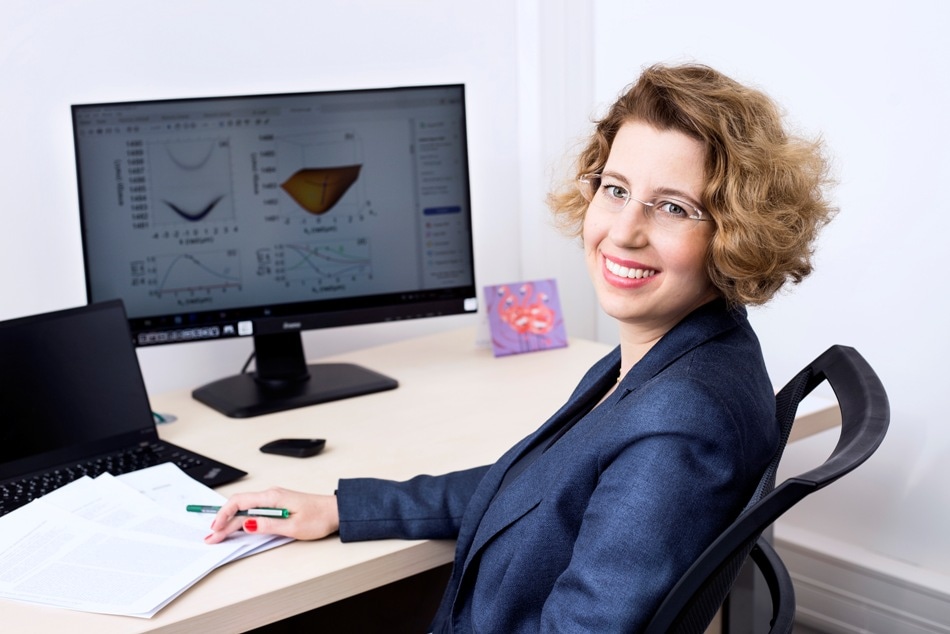Jul 22 2019
Researchers at the University of Warsaw’s Faculty of Physics, together with the University of Oxford and the NIST agency, have demonstrated that quantum interference allows processing of huge sets of data in a faster and more precise way when compared to standard techniques.
 (Image credit: University of Warsaw)
(Image credit: University of Warsaw)
Their studies might increase applications of quantum technologies in fields such as medical diagnostics, artificial intelligence, and robotics. The study outcomes have been reported in the Science Advances journal.
Efficient processing of data such as sound and radio signals, still images, as well as information from different cameras and sensors is crucial in the areas of medicine, contemporary science, information technology, and engineering. From the 1970s, Fast Fourier Transform (FFT) algorithm has been employed to achieve this.
The FFT enables efficient compressing and transmission of data, broadcasting digital TV, storage of pictures, and talking over a mobile phone. Medical imaging systems based on ultrasound or magnetic resonance would not have been possible without this algorithm. Yet, it is still too slow for various challenging applications.
Researchers have been making efforts for many years to satisfy this goal by harnessing the potential of quantum mechanics. This led to the development of the Quantum Fourier Transform (QFT), a quantum equivalent of the FFT that can be achieved using a quantum computer. Since the quantum computer simultaneously processes all probable values (what are called “superpositions”) of input data, there is a significant decrease in the number of operations.
Despite the faster development of quantum computing, there is a relative slump in the area of quantum algorithms. Currently, researchers have demonstrated that it is possible to enhance this result, and in a rather astonishing manner.
Kravchuk Transform
Kravchuk transform is one of the various transforms described by mathematics. It is quite similar to the FFT since it enables processing of discrete (for example, digital) data, but employs Kravchuk functions to disintegrate the input sequence into the spectrum. In computer science, the Kravchuk transform was “rediscovered” at the end of the 1990s.
Apart from being ideal for image and sound processing, it also enabled researchers to create new and considerably more accurate algorithms for recognizing printed and handwritten text (including even Chinese language), people, gestures, faces, and sign language.
Nearly 12 years ago, this transform was shown to be excellent for processing distorted, low-quality, and noisy data and thus could be used for computer vision in autonomous vehicles and robotics. There exists no fast algorithm to compute this transform. As it turns out, quantum mechanics enables this limitation to be circumvented.
“Holy Grail” of Computer Science
In the article published in Science Advances, researchers at the University of Warsaw—Dr habil. Magdalena Stobińska and Dr Adam Buraczewski—the University of Oxford, and the NIST agency have demonstrated that the Kravchuk transform is typically computed by the simplest quantum gate that interferes two quantum states. The gate could be a prominent optical device—a beam splitter that divides photons between two outputs.
Two states of quantum light entering its input ports from two sides tend to interfere. For instance, two identical photons that enter this device at the same time bunch into pairs and exit together through the same exit port. This is the famous Hong-Ou-Mandel effect that can also be extended to states formed of various particles.
A specialized quantum computer for computing the Kravchuk transform can be obtained by interfering “packets” including several indistinguishable photons (indistinguishability is extremely crucial since its lack ruins the quantum effect), which encode the information.
A special setup was constructed to create multiphoton quantum states, what are called Fock states, to carry out the experiment in a quantum optical laboratory at the Department of Physics of the University of Oxford. This laboratory is fitted with Transmission Edge Sensors (TESs), created by NIST, which function at near-absolute zero temperatures.
These detectors have a unique property: they can, in fact, count photons. This enables the quantum state leaving the beam splitter and, thus, the result of the computation to be accurately read. Most significantly, this computation of the quantum Kravchuk transform always requires the same time, irrespective of the input data set’s size.
It is the “Holy Grail” of computer science: an algorithm including just one operation, carried out with a single gate. Certainly, to achieve the result in practice, the experiment must be performed several hundred times to obtain the statistics. This is exactly how every quantum computer functions. However, it does not need much time since the laser synthesizes dozens of millions of multiphoton “packets” in a second.
The result achieved by researchers from Poland, the United Kingdom, and the United States will be applied to develop new quantum algorithms and quantum technologies. Its range of applications is much beyond quantum photonics, as a similar quantum interference can be detected in several different quantum systems.
The University of Warsaw has applied for an international patent for this innovation. The researchers believe that soon, the Kravchuk transform will be applied in quantum computation, where it will be part of new algorithms, specifically in hybrid quantum-classical computers that blend quantum circuits with “normal” digital layouts.